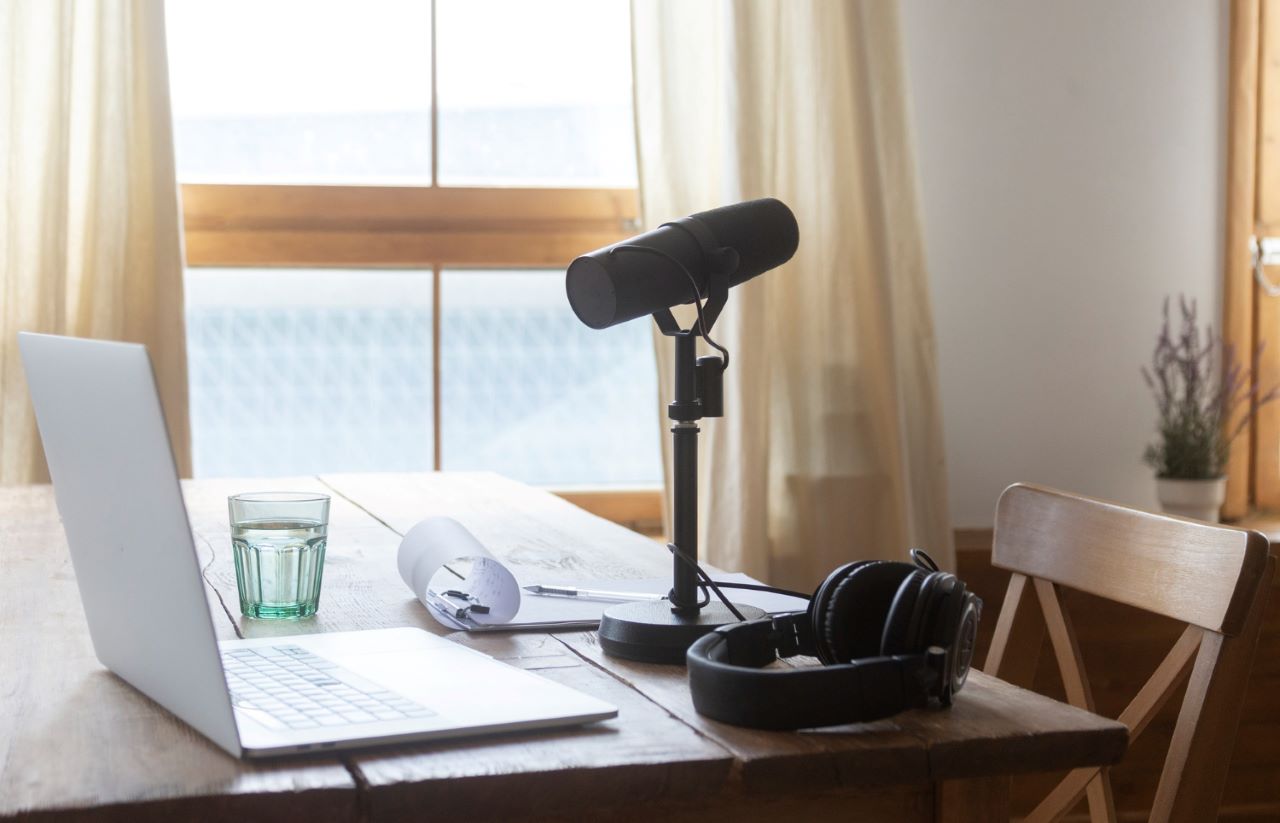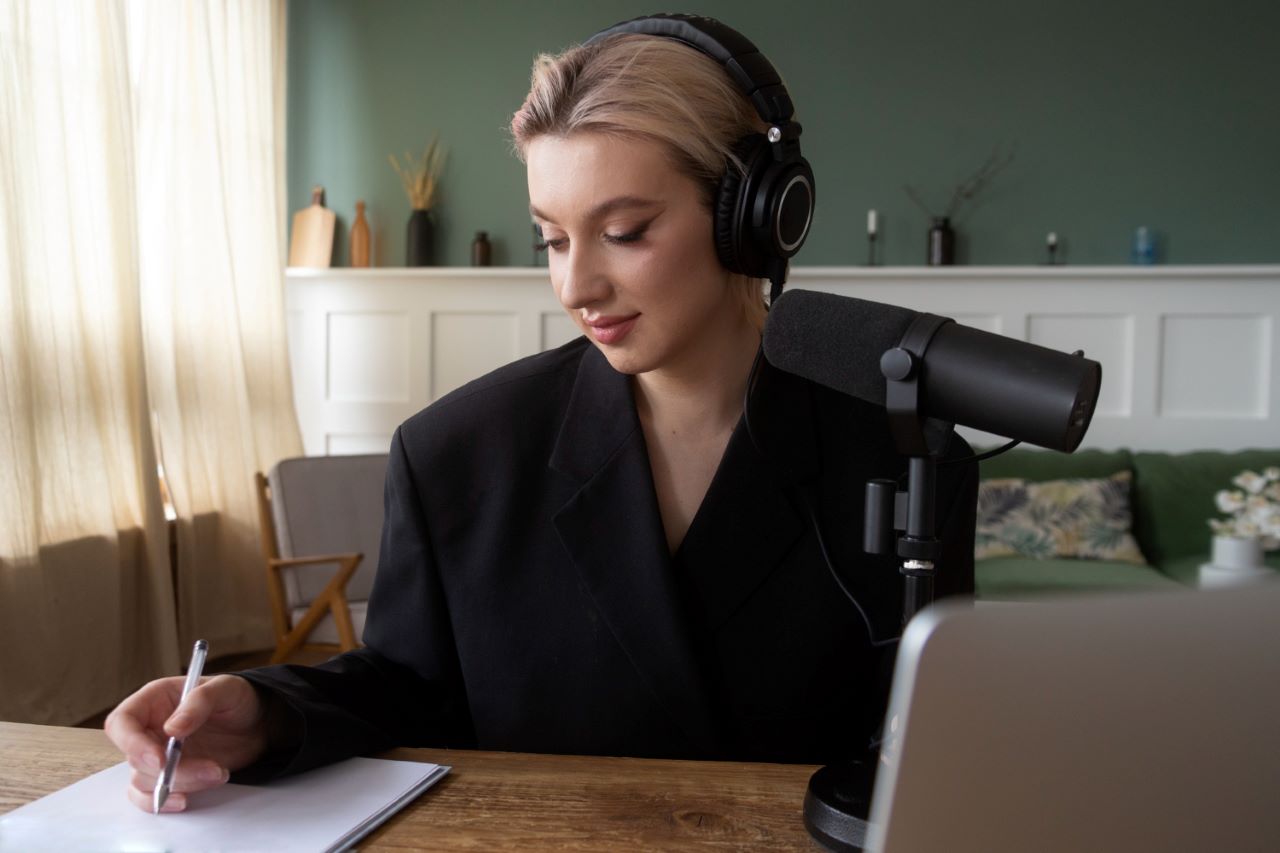If you’re an audiophile or a podcaster, you probably understand the importance of superior audio quality, especially when it comes to capturing voice recordings. Let’s be honest; nobody wants to listen to a podcast episode, interview, or voiceover where the speaker sounds like they’re talking from the other side of a thick wall, right?
That’s where the renowned Shure SM7B microphone comes into the picture. It’s a favorite among many professionals for its deep, rich tones. But there’s a little secret to truly unlocking its potential, and it’s called a preamp. In this article, we highlight the best preamp for SM7B. Come along, dear reader, as we dive into the exciting world of preamps tailored for the SM7B!
Now, you might be wondering, “Why do I even need a preamp? Isn’t the microphone enough?” Well, imagine baking a cake and leaving out the baking powder. Sure, it might still taste okay, but it won’t have that fluffy, mouth-watering texture we all crave. Similarly, while the SM7B is a fantastic mic on its own, pairing it with the right preamp can take your audio game to new heights.
Related: Best Podcast Mixers
Contents
What Is A Preamp, And Why Is It Essential For SM7B?
Every electronic device that produces sound, from the tiniest earbud to the most sophisticated studio microphone, involves some amplification. Think of amplification as the ‘oomph’ that pushes the audio forward. Now, the Shure SM7B, despite being a professional-grade microphone, has a relatively low output dynamic microphone level. This means that to get the best sound quality, you need a bit of a boost, and this boost is what the preamp offers.
But let’s break it down a bit more. A preamplifier, commonly known as a preamp, is a device that amplifies weak audio signals to a level suitable for further amplification or processing. In simple terms, it’s like giving your audio a shot of espresso to wake it up! When paired with microphones like the SM7B, a preamp ensures that your recordings are clear, loud enough, and free from unwanted noise or distortion.
The Need For A Preamp With SM7B
The Shure SM7B, while being an absolute beast in capturing pristine vocals, has a design quirk. Its output signal is, let’s say, a tad on the quiet side. But why does this matter? Here’s the thing: If you directly plug the SM7B into an audio interface or mixer without a preamp, you’ll find yourself cranking up the gain knob.
And when you do that, you introduce a plethora of unwanted background noise. It’s like trying to hear a whisper in a crowded room—frustrating and almost impossible.
However, when you introduce a high-quality preamp into the equation, magic happens. First and foremost, it provides the necessary gain boost, ensuring that your voice stands out loud and clear without any of that pesky background noise. Think of it as clearing out the room so that the whisper becomes a clear, resonant speech.
Moreover, a preamp can offer additional tonal shaping capabilities. This means you can tweak and adjust the sound to your liking, making sure it perfectly complements the SM7B’s natural sound profile. Whether you’re aiming for a warm, vintage tone or a crisp, modern sound, the right preamp can be your trusty sidekick.
Best Preamp For SM7B
When it comes to preamps, there’s no one-size-fits-all. The market is brimming with options, each with its unique set of features, benefits, and price points. Now, we understand that sifting through all these choices can be daunting. But fret not! We’ve done the legwork for you and compiled a list of top-notch preamps that pair beautifully with the SM7B.
But wait! Before we delve into our curated list, let’s remember a golden rule: While specs and features are crucial, the best preamp is the one that aligns with your specific needs, preferences, and budget. Always consider factors like your recording environment, the type of content you produce, and your desired sound profile.
Without further ado, let’s jump right in!
1. TONOR Mic Preamp
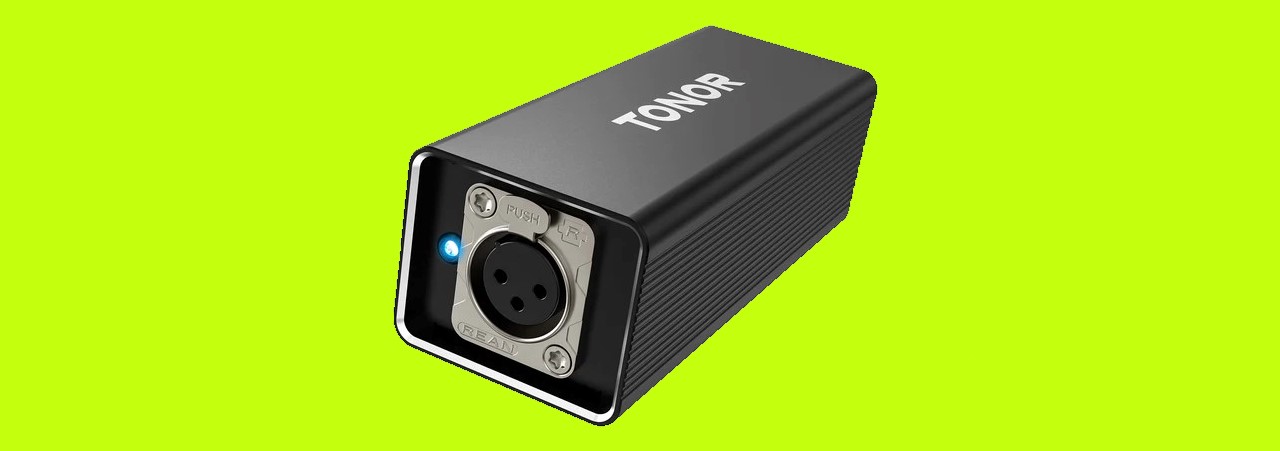
The TA20 microphone preamp preserves natural sound while elevating vocals, percussion, and acoustic instruments. Image Source.
Key Features
- Professional-grade design and build quality
- Compact, space-saving design
- Designed to complement dynamic microphones
The TONOR Mic Preamp is a remarkable device that promises to elevate your audio recordings, especially when paired with the SM7B. Built with professional-grade standards in mind, this preamp offers clarity and detail in every soundbite, ensuring your voice resonates as intended. Its compact design means you can set up your recording station without unnecessary clutter, allowing you to focus solely on creating content.
If you’ve been dealing with audio that lacks vigor or seems distant, the TONOR can be the solution. By amplifying the signal from your microphone, it ensures that the final output is vivid and clear. It’s designed to work seamlessly with dynamic microphones, allowing for consistent and pristine recordings every single time.
Pros
- High-quality audio amplification
- Suitable for various microphone types
- Streamlined design ensures minimal clutter
Cons
- Might require some learning curve for beginners
- The build may not be as robust as some of its competitors
2. Rodyweil Microphone Preamp
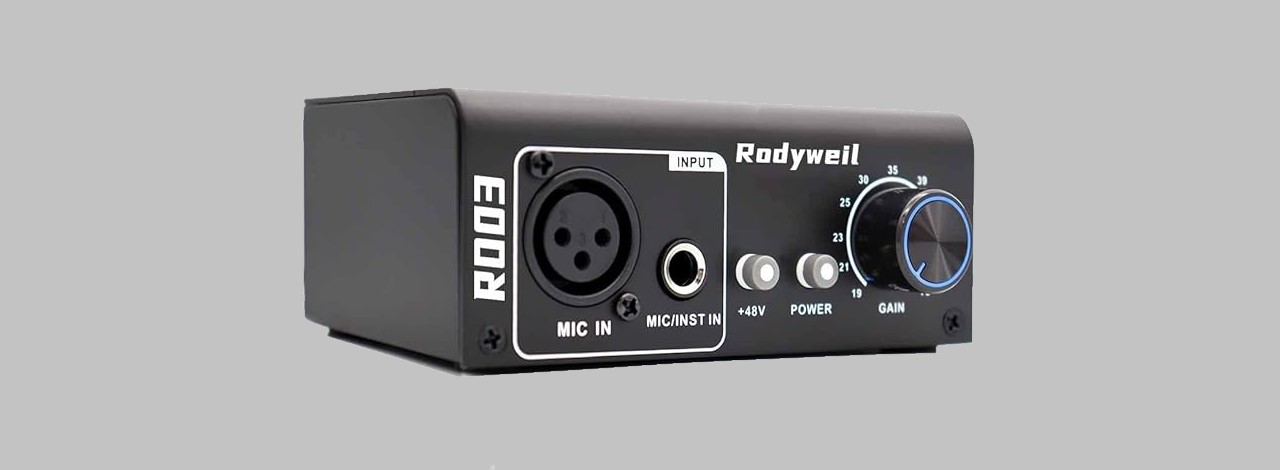
The Rodyweil Microphone Preamp can enhance your signal by up to +75 dB with clean and transparent gain. Image Source.
Key Features
- Compatible with condenser microphones
- Ideal for streaming and podcasting
- User-friendly interface
Streamers and podcasters, rejoice! The Rodyweil Microphone Preamp has been tailor-made for individuals who can’t afford a break in clarity. Designed to integrate seamlessly with condenser microphones, this preamp ensures every word is captured with precision. Whether you’re streaming live or recording a podcast episode, the Rodyweil guarantees consistent audio quality without interference.
Furthermore, its user-friendly interface ensures even beginners can set it up without a hitch. There’s no more fussing with complicated settings; plugin, and you’re good to go. It’s the perfect tool for those who require high-quality audio without the complexities of a professional setup.
Pros
- Provides crisp and clear audio recordings
- Easy to set up and use
- Suitable for various recording scenarios
Cons
- Primarily designed for condenser mics, it might not be ideal for all microphone types
- Physical design might not appeal to all users
3. Klark Teknik MIC BOOSTER CT 1

The CT 1 can work with almost any dynamic or passive ribbon microphone. Image Source.
Key Features
- Designed for dynamic microphones
- Offers noise-free amplification
- Professional-grade build and performance
Meet the Klark Teknik MIC BOOSTER CT 1, an embodiment of perfection when it comes to amplifying dynamic microphones. Designed for professionals who won’t settle for anything less than excellence, this booster goes beyond mere amplification. It captures the nuances, the intonations, and the subtleties in your voice, ensuring every recording sounds studio-quality.
Additionally, its noise-free amplification feature means that you don’t just get louder audio, you get clearer audio. The elimination of unwanted interference ensures that your listeners hear only what they are meant to, making it an excellent companion for voice-over artists, podcasters, and singers alike.
Pros
- Delivers top-tier audio clarity
- Reduces unwanted noise and interference
- Sturdy build ensures longevity
Cons
- Might be on the pricier side for some users
- Not as compact as some of its competitors
4. SE Electronics – Dynamite Active in-Line Preamp

The DM1 provides improved level to a preamp – all without adding noise or coloration, bringing new life to your favorite passive microphones. Image Source.
Key Features
- Active in-line amplification
- Sleek and minimalist design
- Professional-grade performance
The SE Electronics Dynamite Active in-Line Preamp isn’t just another device in your recording arsenal; it’s a revelation. True to its name, this preamp packs an explosive punch in a sleek frame. Designed for precision, it elevates your recordings by adding that extra vigor, ensuring every decibel sounds crisp and clear. Such dynamic mics are an upgrade that, once you experience it, you can’t do without.
What sets the Dynamite apart is not just its amplification capabilities but its form factor. It’s sleek, minimalist, and uncomplicated, designed to seamlessly blend into your setup. This ensures that while this dynamic mic might be inconspicuous in appearance, its impact on your audio is anything but.
Related: SE Electronics Dynamite DM1 Vs. Cloudlifter
Pros
- Delivers robust audio amplification
- Easy to integrate into any recording setup
- Reduces ambient noise effectively
Cons
- Might be overkill for casual users
- Requires careful handling due to its design
5. Cloud Microphones – Cloudlifter CL-1 Mic Activator – Ultra-Clean Microphone Preamp
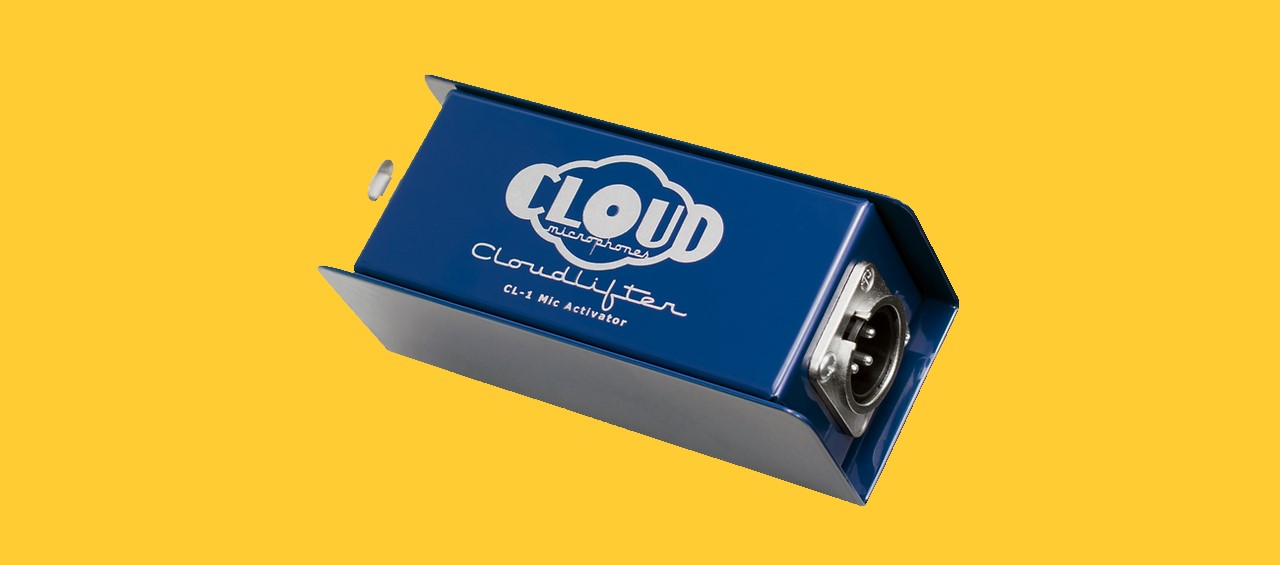
Cloudlifter’s patented discrete JFET circuitry preserves the source’s natural sound while keeping the direct audio path clear of transformers, capacitors, and resistors. Image Source.
Key Features
- Ultra-clean audio amplification
- Suitable for both studio and on-the-go recordings
- Professional-grade build
For the connoisseurs of sound, the Cloud Microphones Cloudlifter CL-1 is the holy grail of preamps. Crafted for perfection, this Mic Activator is all about delivering ultra-clean audio that resonates with clarity. When you’re in pursuit of pristine audio, where every note, every word, and every breath matters, the Cloudlifter is your go-to device.
More than just a preamp; it’s an experience. Its professional-grade build ensures that it’s not just durable but also consistent in performance. Whether you’re in a studio or on-the-move, the Cloudlifter promises to deliver unparalleled clarity, ensuring your voice always takes center stage, devoid of any noise or interference.
Related: Do You Need A Cloudlifter For Shure SM7B?
Pros
- Delivers unparalleled audio clarity
- Sturdy build ensures durability
- Easy to set up and use
Cons
- Might be on the pricier side
- Design might be too plain for some
6. Triton Audio FetHead in-Line Microphone Preamp
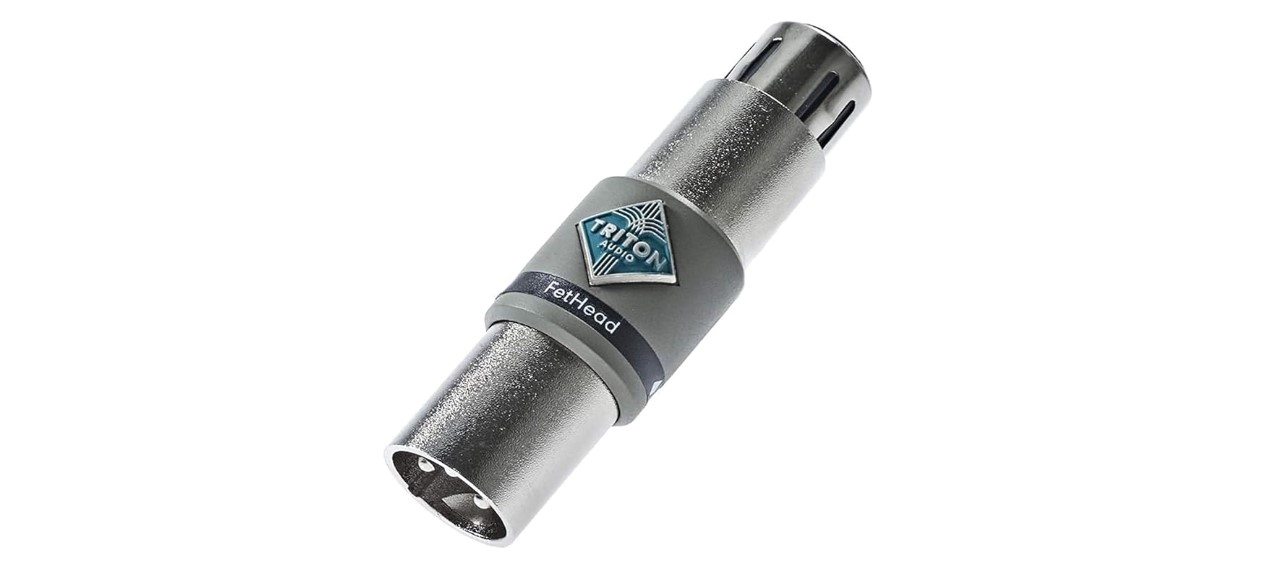
The Triton Audio FetHead in-Line Microphone Preamp has double single-ended amplifier topology. Image Source.
Key Features
- In-line audio amplification
- Designed to reduce unwanted noise
- Compatible with a wide range of microphones
Bringing the best of amplification in a compact form factor, the Triton Audio FetHead is a must-have for audiophiles and recording professionals. Designed as an in-line preamp, it offers the power and performance of much larger devices in a small and efficient package. The FetHead ensures that your voice is not just louder but richer and more nuanced.
Its compatibility with a diverse range of microphones means that no matter what your setup, the FetHead can integrate seamlessly, offering a boost that’s both significant and clear. Whether you’re a budding podcaster, a professional voice-over artist, or just someone passionate about quality audio, the Triton Audio FetHead is a device that promises to elevate every recording.
Pros
- Offers a significant boost to audio signals
- Easy to use and integrate into setups
- Durable and robust design
Cons
- Some users might prefer a standalone preamp design
- Might require some understanding for optimal setup
Each of these preamps brings its unique features to the table, ensuring that users of the SM7B have ample choices to get the best out of their recordings. Remember to assess your needs, the type of recordings you generally do, and your budget before making a choice.
Key Features To Consider When Choosing The Best Preamp For SM7B

Image by Freepik
Choosing the right preamp for your Shure SM7B microphone can make a world of difference in the quality of your recordings. But with so many options available in the market, how do you zero in on the perfect one? By focusing on key features, of course! Let’s delve into these features that can guide your buying decision.
Gain Levels
The gain is essentially the boost your microphone gets. With the SM7B’s low output, you’ll require a preamp that offers a substantial amount of gain to get your voice recordings at the optimal level. Generally, anything providing 50-60dB or more is a good starting point.
However, always ensure that the gain boost does not compromise clarity or introduce unwanted distortion. After all, it’s not just about the volume but maintaining the pristine quality of your voice.
Noise Floor
Noise is the bane of any recording. When we talk about the noise floor, we’re referring to the electronic interference and ambient noise a preamp might introduce to your recordings. A low noise floor is paramount.
You want your listeners to hear your voice, your music, or your podcast content, not the hum or hiss from your equipment. Always check the specifications and user reviews to understand the preamp’s noise performance before investing.
Connectivity Options
In today’s digital age, connectivity isn’t just about plugging in a microphone. Does the preamp have USB connectivity? Can it interface seamlessly with other equipment in your studio? How about compatibility with different software or digital audio workstations?
The more versatile the connectivity options, the easier it will be to integrate the preamp into your existing setup and perhaps even future-proof it for upgrades down the road.
Build And Design

Image by Freepik
While the internal workings of a preamp are crucial, let’s not overlook the importance of its physical build and design. A robust, durable build ensures longevity, while a sleek design ensures it doesn’t eat up too much space or look out of place in your recording environment.
Portability might also be a factor if you’re someone who records on the go. Consider the size, weight, and overall aesthetics when making your decision.
Price Range And Budget
Price is always a decisive factor. While we all want the best, it’s essential to strike a balance between features and cost. Determine a budget and stick to it. Remember, the most expensive option is not always the best.
Conversely, don’t be too quick to dismiss affordable options; they might surprise you with their performance. Prioritize the features most important to you and find a preamp that offers the best value within your budget.
Dynamic Range
Considering the dynamic range is crucial as it refers to the ratio between the largest and smallest possible values of a changeable quantity, such as in sound and light. It is essential to choose a preamp that can handle the dynamic range of your recordings to ensure that the sound is captured accurately and authentically without losing detail in quiet or loud parts.
Mic Input
Lastly, consider the mic input options available on the preamp. Ensure that it is compatible with your microphone and other equipment. This will ensure that you can easily connect your SM7B and any other microphones you might use without requiring additional adapters or interfaces.
Choosing a preamp that aligns with these features will ensure that your recordings are not only loud and clear but also rich and vibrant, capturing every nuance of the sound produced by your Shure SM7B microphone.
FAQs
Do I Need A Preamp With A Cloudlifter?
The Cloudlifter is often mistaken for a preamp due to its capability to provide cleaner gain to your microphone. However, it’s technically a mic activator. What it does is to take the phantom power from your interface (or mixer) and use it to give your dynamic or ribbon microphone a clean boost, often around +25dB.
Now, regarding the need for a preamp: The Cloudlifter doesn’t replace a preamp; it complements it. Every audio interface or mixer has a built-in preamp. When you connect a microphone to an interface or mixer, you are actually plugging it into its preamp. The Cloudlifter’s role is to provide additional clean gain before the signal reaches this preamp. This is especially useful for microphones like the SM7B, which have a low output and can benefit from the extra boost.
To summarize:
- The Cloudlifter provides an additional clean gain boost.
- You’ll still utilize the built-in preamp of your audio interface or mixer.
- It enhances the performance of the preamp by delivering a stronger signal to it.
Will Phantom Power Damage SM7B?
The Shure SM7B is a dynamic microphone, and in general, dynamic microphones do not require phantom power to operate. However, the good news is that the SM7B is designed to be robust, and applying phantom power to it will not cause any damage.
While it’s always a good practice to ensure phantom power is turned off when plugging or unplugging microphones to prevent potential issues, you can rest easy knowing that your SM7B won’t be harmed if it’s inadvertently exposed to phantom power.
Does The Shure SM7B Need A Preamp?
Yes, the Shure SM7B benefits significantly from a preamp. The microphone itself has a low output, which means it produces a relatively quiet signal when plugged directly into an audio interface or mixer. While most interfaces and mixers have built-in preamps, they might not provide the necessary gain for the SM7B without introducing noise.
Using a dedicated preamp or a mic activator like the Cloudlifter before the signal reaches the interface ensures that the SM7B’s output is boosted cleanly. This results in a clearer, louder recording without the need to turn the gain on the interface too high, which can introduce unwanted noise.
In summary, while you can use the SM7B without an external preamp, using one ensures you get the best audio quality from the microphone.
Final Thoughts
In the world of audio recording, small changes can lead to massive improvements in output. The Shure SM7B, a marvel in its own right, truly shines when paired with the right preamp. But as we’ve learned, not all preamps are created equal. Factors like gain levels, noise floor, connectivity, build quality, and of course, price play a pivotal role in determining which preamp is the perfect match for your microphone.
Remember, the goal isn’t to find the best preamp on paper but to find the best preamp for you. Your specific needs, your recording environment, the type of content you create—all of these personal factors come into play.
It might require a bit of research, a bit of soul-searching about your audio priorities, and perhaps even some trial and error. But when you finally hit upon that perfect combination of microphone and preamp, the results will be worth every bit of effort.
As technology continues to evolve, so will the world of preamps. New features, more streamlined designs, and innovative solutions will hit the market. But the principles remain the same. Prioritize clarity, understand your needs, and always aim for authenticity in your recordings. Because at the end of the day, it’s not just about sound; it’s about your voice, your message, and your art. Choose wisely!
